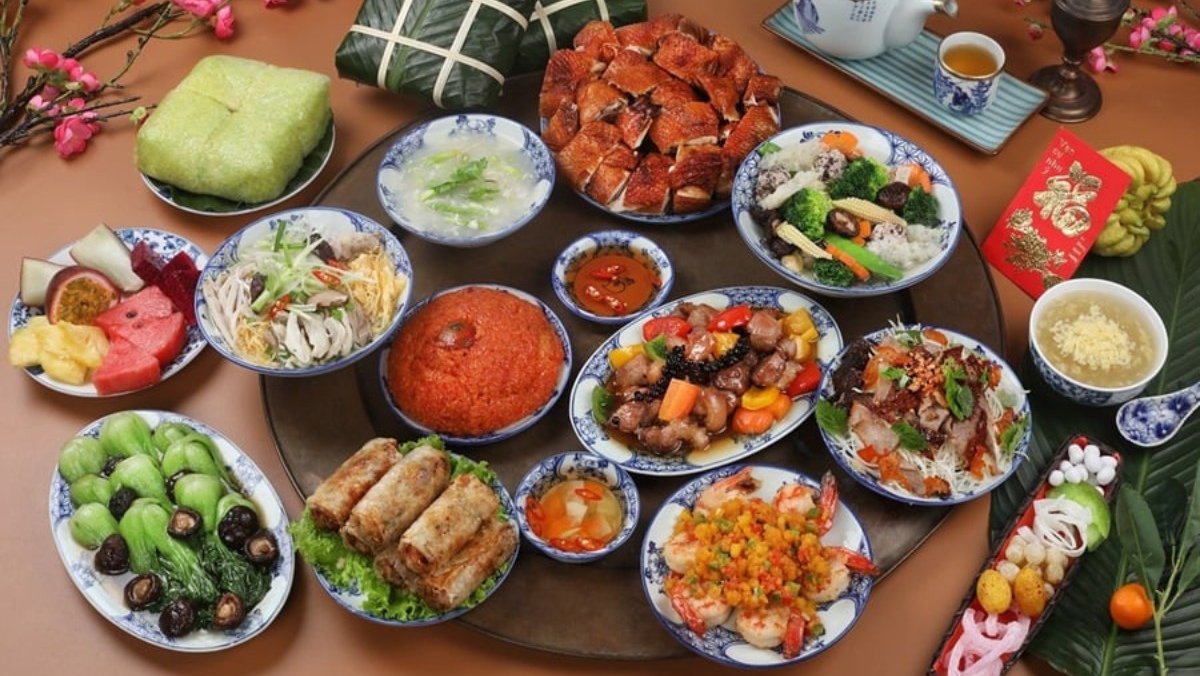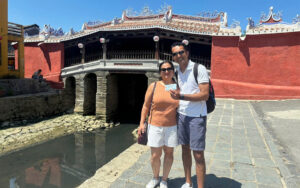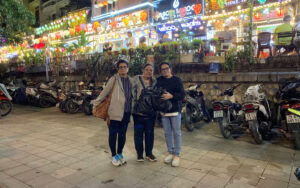Vietnamese New Year Food is more than a culinary assortment; it embodies a rich tapestry of tradition, culture, and symbolism. With the Tet holiday on the horizon, the excitement surrounding these delectable offerings intensifies. This article unravels the world of Vietnamese New Year food, delving into its distinctive flavors, cultural significance, and the heartwarming roles these dishes play in celebrating this joyous occasion.
The distinctive features of Tet feasts in each region
Here are the significant differences in the Tet cuisine of the three regions in Vietnam:
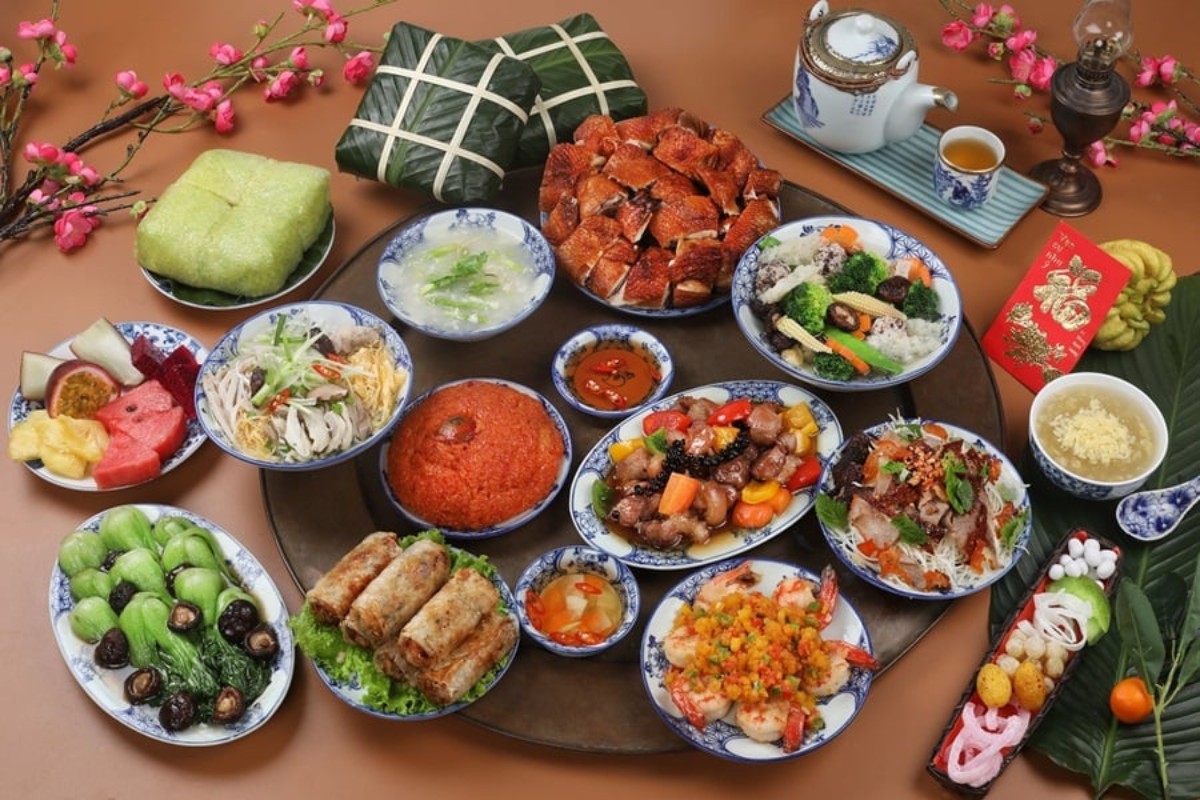
- Northern Vietnam: Tet feasts are characterized by traditional and standardized meals in Northern Vietnam. Attention is given to the presentation and preparation of traditional dishes, despite the introduction of new and unique items. Traditional dishes of Northern region remain essential, preserving cultural authenticity.
- Central Vietnam: Facing a challenging climate, emphasizes food preservation. Dishes are served in small bowls or plates, showcasing remarkable diversity in preparation. In addition to essential Vietnamese New Year food, the Central region offers unique culinary creations.
- Southern Vietnam: Contrasting the North’s cold weather, the South welcomes Tet with warmth. Boasting abundant produce and historical migration, Southern Tet feasts are diverse, with less emphasis on formal rituals than in the Northern region. The Southern celebration reflects regional warmth and a rich culinary tapestry.
Vietnamese New Year food in the northern region
Check out some popular dishes that must be included in the Vietnamese lunar new year food of the North with Asia Legend Travel.
Banh chung (Chung cake)
Chung Cake is one of the most popular Vietnamese New Year food. It is a square cake crafted from glutinous rice, mung bean paste, and pork, enveloped in banana leaves, and simmered for up to 12 hours. Prepared with care, families offer these Chung cakes to ancestors on the family altar as a gesture of respect and gratitude. Making Banh Chung during Tet fosters family unity, passing culinary traditions through generations. Considered a precious gift, homemade Chung cakes are often exchanged during Tet, embodying the essence of tradition, love, and festive celebrations.
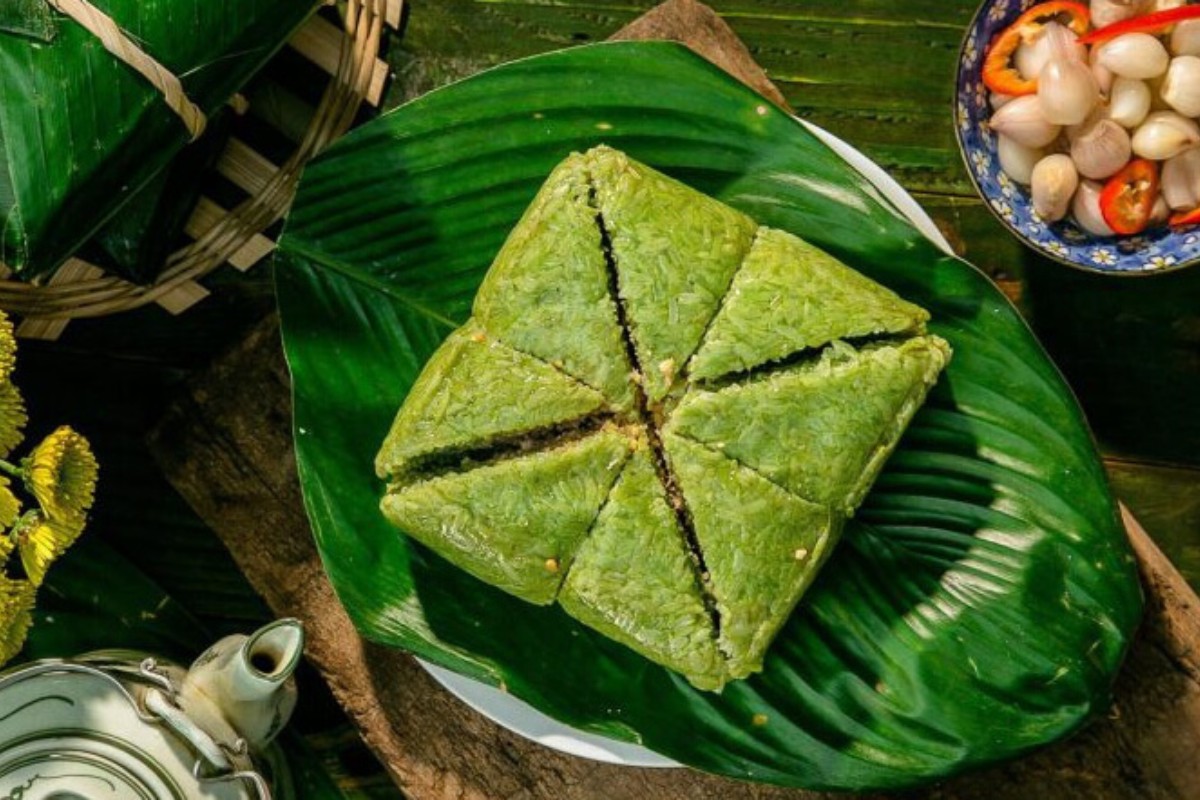
Ga luoc
Ga luoc, or boiled chicken, is one of beloved Vietnamese new year traditions, featuring a whole chicken, symbolizing family unity. This straightforward yet flavorful choice allows versatility in pairing with various side dishes. Cooked with aromatic herbs like lemongrass and ginger, the chicken exudes a fragrant charm. Served with lime leaves on top and a tangy dipping sauce comprising fish sauce, lime juice, garlic, and chili, or salt and lime juice, ga luoc offers a delightful Vietnamese New Year food, embodying simplicity, togetherness, and the joy of festive dining.
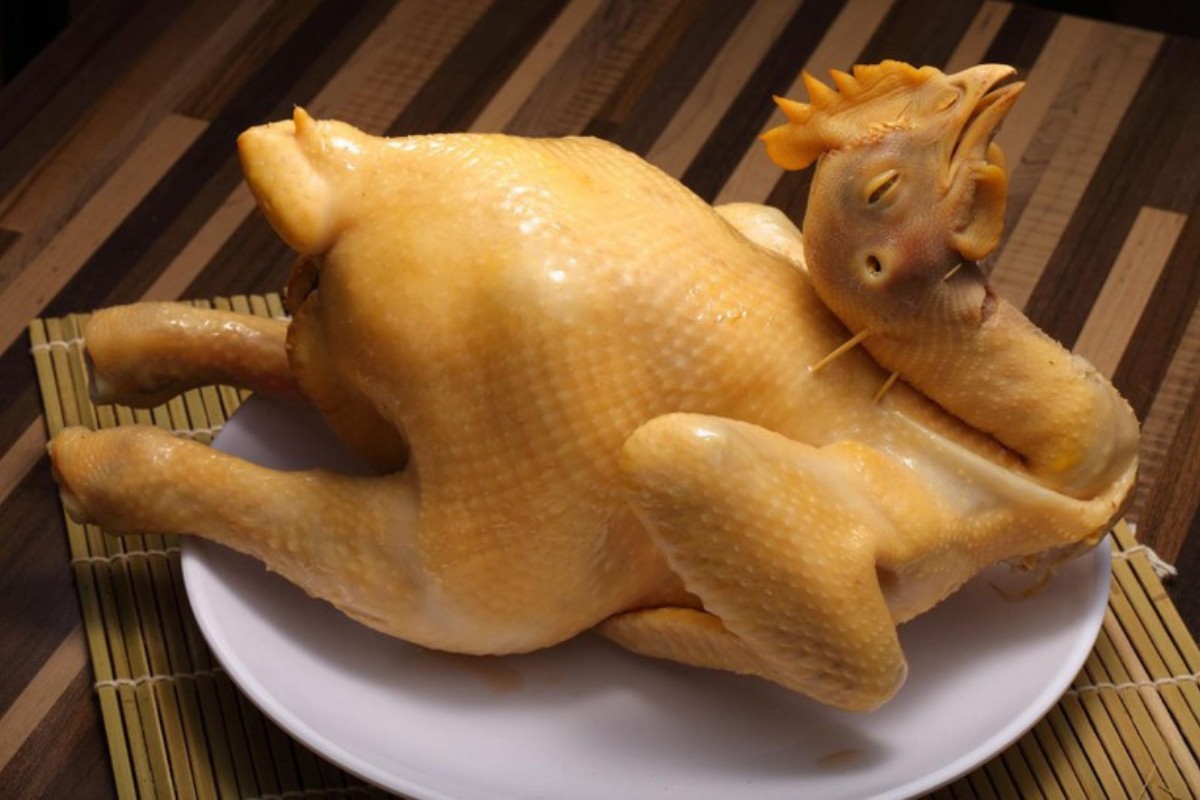
Xoi gac
Xoi gac blends glutinous rice with the vibrant red-orange fruit of the sweet gourd plant, renowned for its antioxidants. Symbolizing luck, happiness, and prosperity, the dish is a favorite during festive occasions like Tet and weddings. With a subtly sweet, nutty flavor, xoi gac is visually appealing due to its auspicious color. Some preparations involve steaming or cooking it with coconut milk and sugar, elevating the taste to create a delightful treat that embodies the essence of celebration and cultural significance.
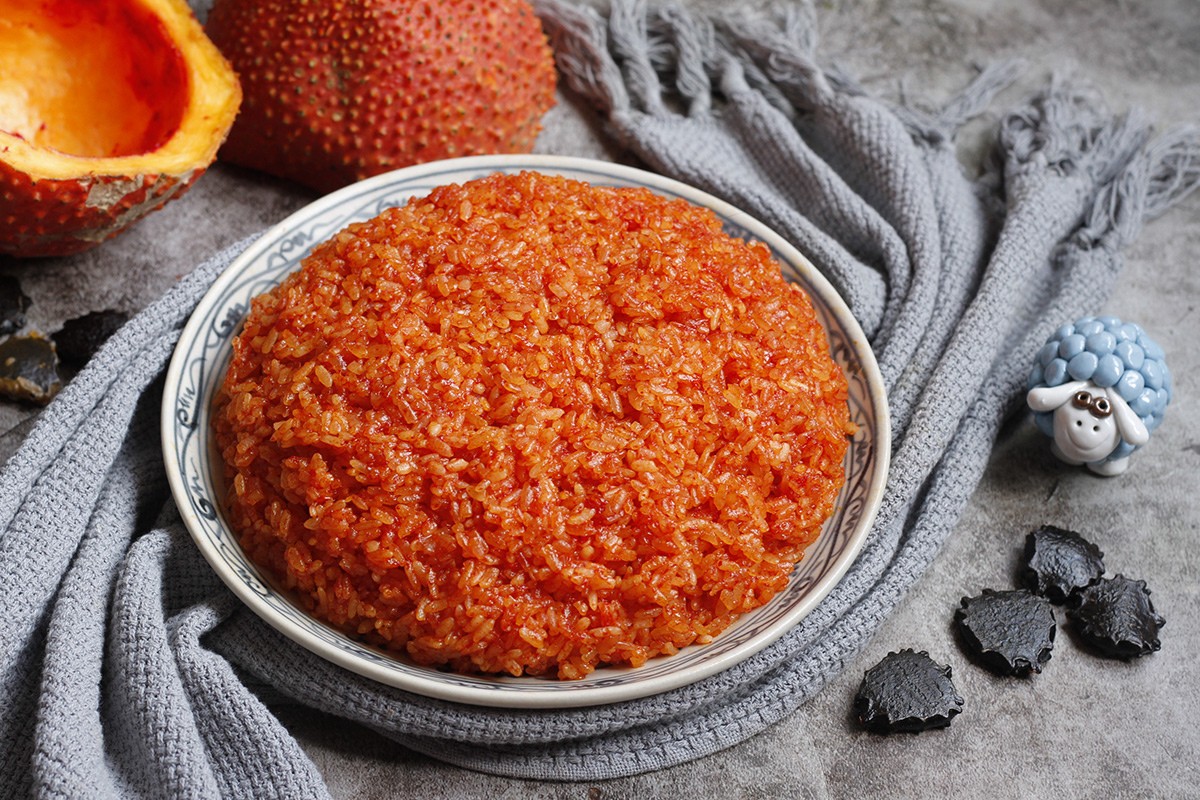
Gio lua, Gio xao
Gio lua and gio xao, traditional Vietnamese pork roll dishes, grace Vietnamese New Year food. Gio lua, a soft, pinkish sausage of minced pork wrapped in banana leaves, is steamed to tenderness. Gio xao features thinly sliced pork sausages stir-fried with spices and fresh veggies. Served with sticky rice, these dishes become a delightful part of Tet feasts, offering a flavorful and culturally significant addition to the Lunar New Year celebrations.
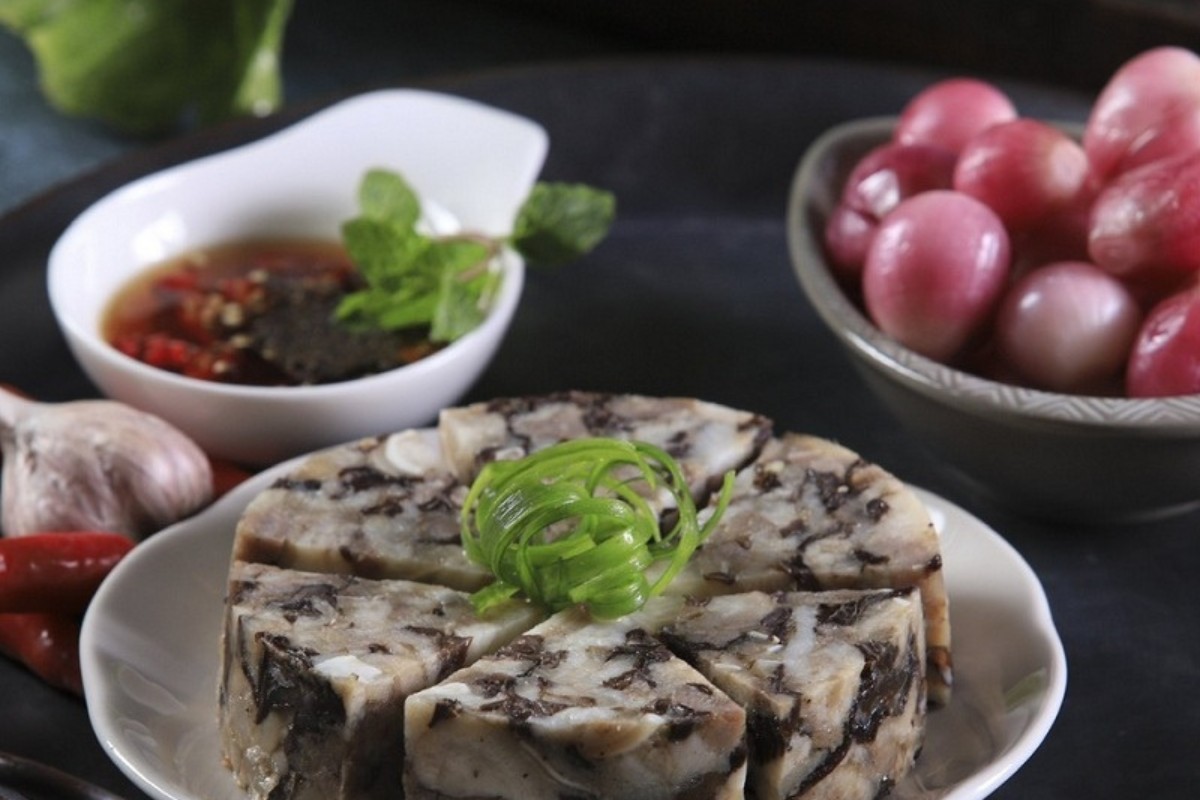
Nem ran – A popular Vietnamese New Year food
Nem ran or spring rolls is a Vietnamese New Year food favorite that boasts a delectable mix of minced pork, shrimp, and vermicelli noodles. With a crispy outside and a tender inside, these rolls are a flavorful delight. As a Tet staple, they symbolize the welcoming of the new year, gracing Tet feasts alongside other favorites like banh chung and sticky rice. These spring rolls bring a burst of taste and joy to the festivities, making them an indispensable and cherished part of Tet celebrations.
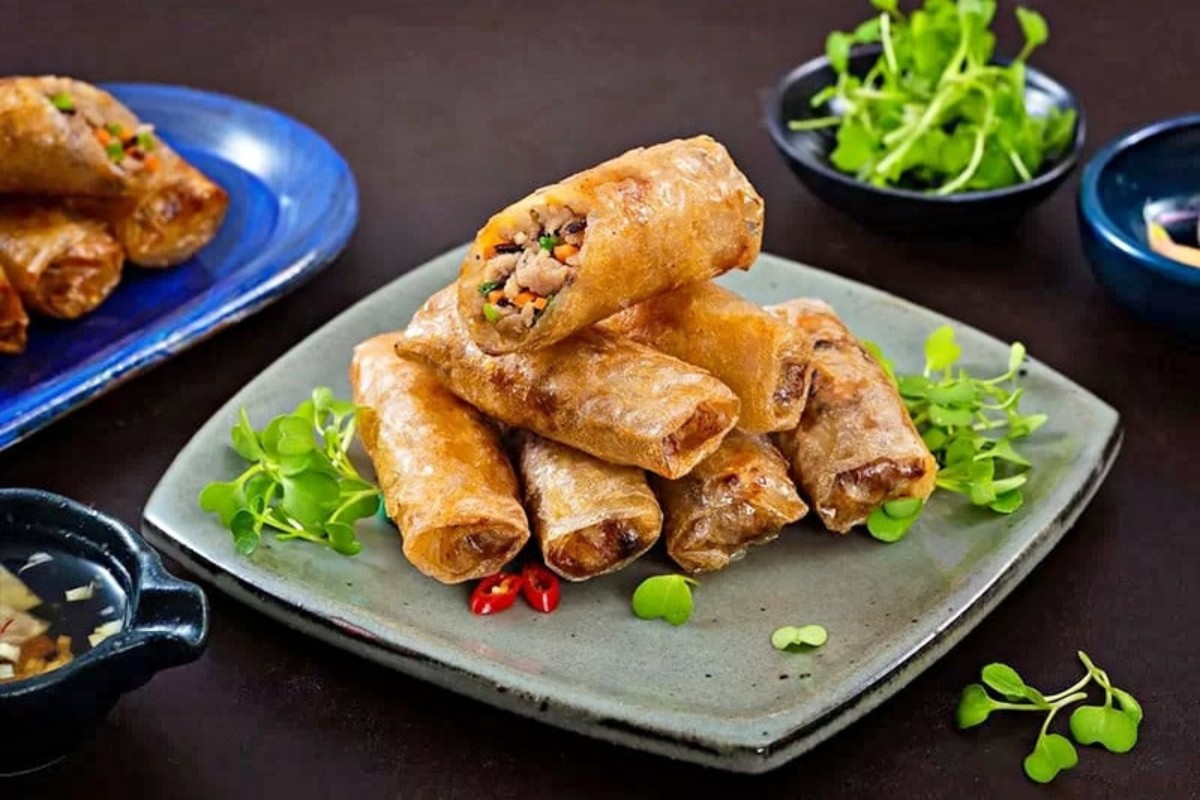
Thit dong
Thit dong is a cherished Vietnamese lunar new year traditions dish that graces Tet meals. This pork specialty undergoes a meticulous process, where pork is cooked with spices and herbs, combined with a gelatinous broth from boiled pork skin and bones. Once set, it transforms into a firm, savory jelly, sliced or cubed for serving. Best enjoyed cold, thit dong pairs well with rice, pickled veggies, and soy sauce. Its labor-intensive preparation symbolizes the care and dedication poured into crafting special holiday meals, making it a symbol of Tet festivities.
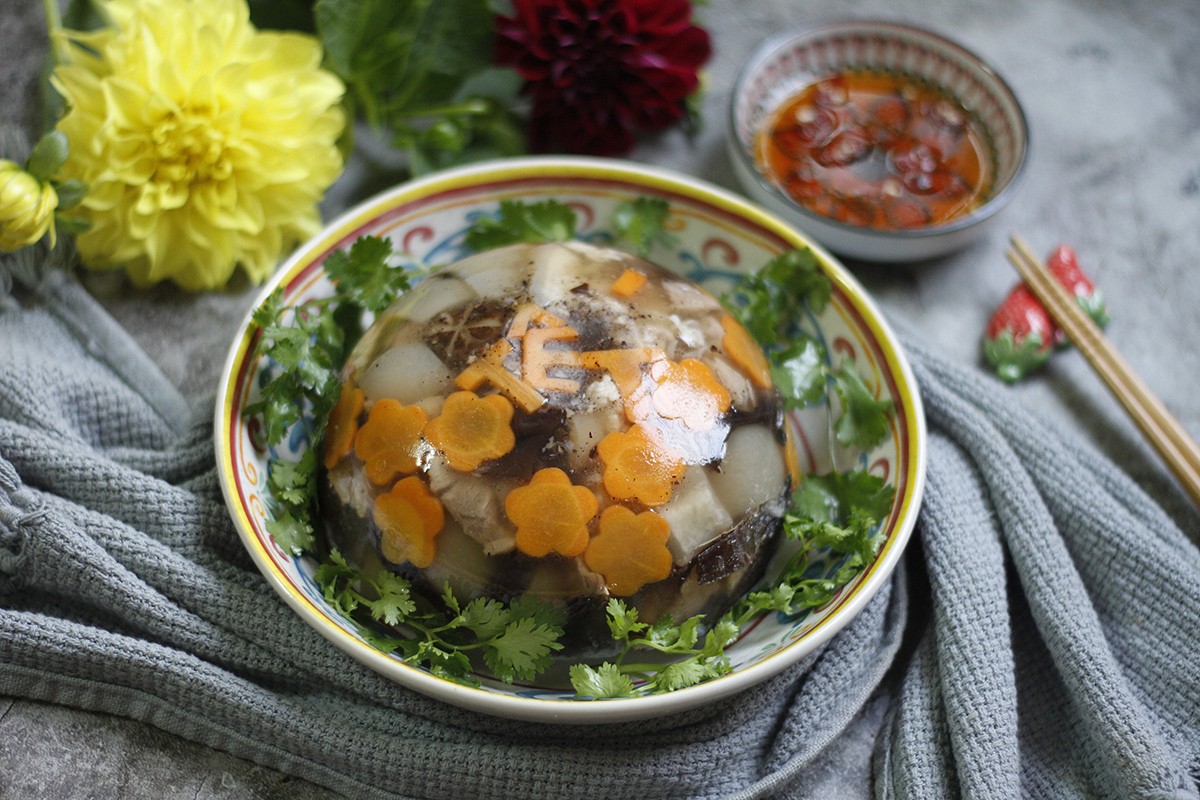
Dua hanh
Dua hanh is one of a Tet staple, consists of white onions soaked in a mix of salt water or fish sauce and sugar, creating a distinctive blend of salty, sweet, and sour flavors through fermentation. This traditional dish graces Tet tables, offering a flavorful addition to meat dishes and meals. Beyond its culinary role, pickled onions are also presented to ancestors during Tet as a heartfelt expression of gratitude and a hopeful wish for prosperity in the upcoming new year.
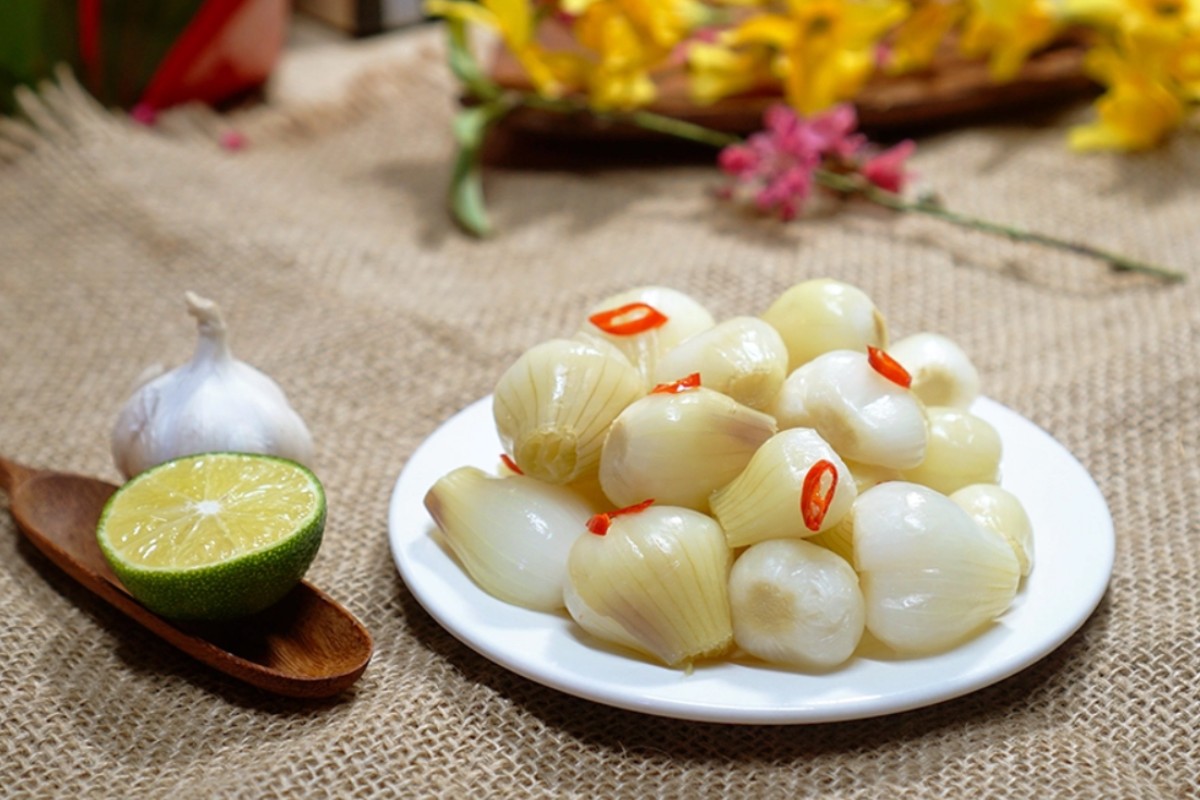
Canh bong bi lon – A healthy Vietnamese New Year food
Canh bong bi lon is a Vietnamese soup featuring pork skin, carrots, broccoli, and mushrooms. The variations of this soup are enjoyed during Tet, served alongside white rice and other savory dishes, making it a wholesome and traditional addition to Lunar New Year celebrations.
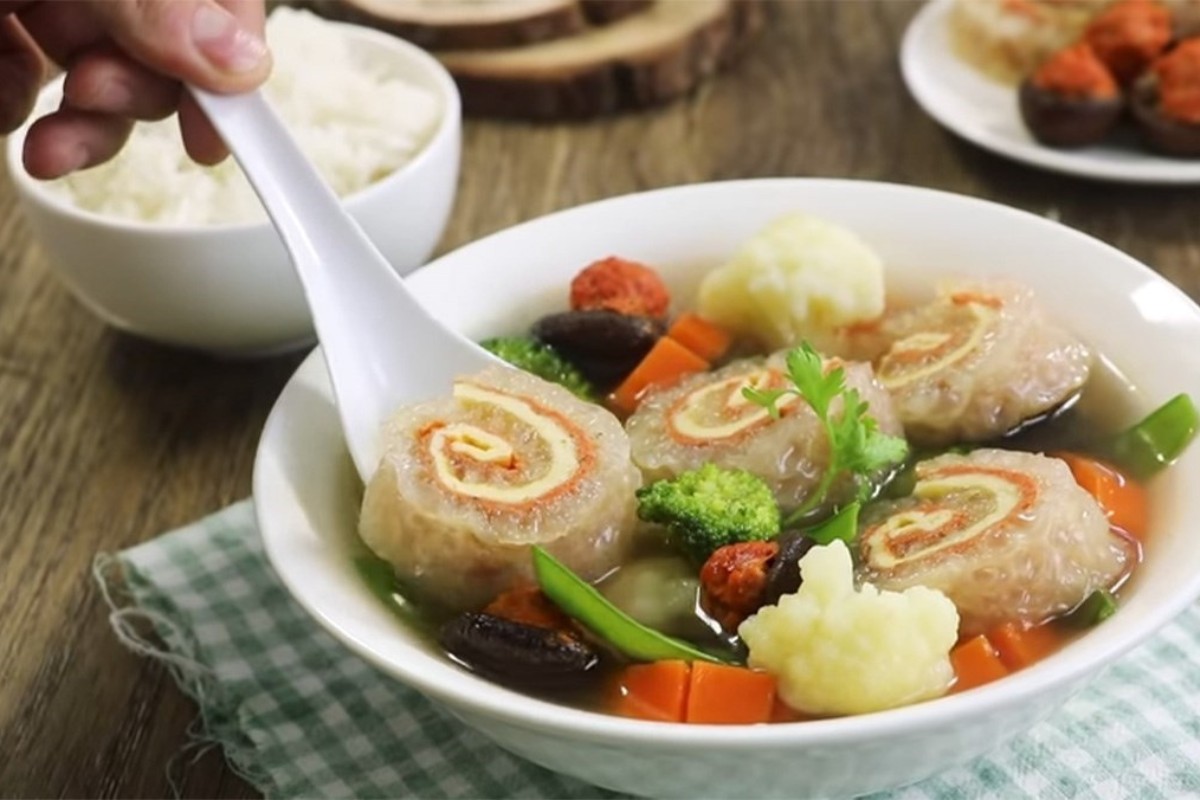
Vietnamese New Year food in the central region
Here are several dishes that stand out for their unique flavors and highlight the Tet feast in Central Vietnam.
Nem chua
Nem chua, Vietnamese fermented pork or sour sausage, is a beloved traditional dish. Made from ground pork mixed with diverse ingredients, it ferments to develop a slightly sour taste. Shaped into bite-sized portions after fermentation, it’s served with herbs and veggies like lettuce, mint, cilantro, and cucumber slices. During Tet, Vietnamese families enjoy these flavorful fermented pork rolls as a delicious and popular appetizer, adding a savory touch to their festive celebrations.
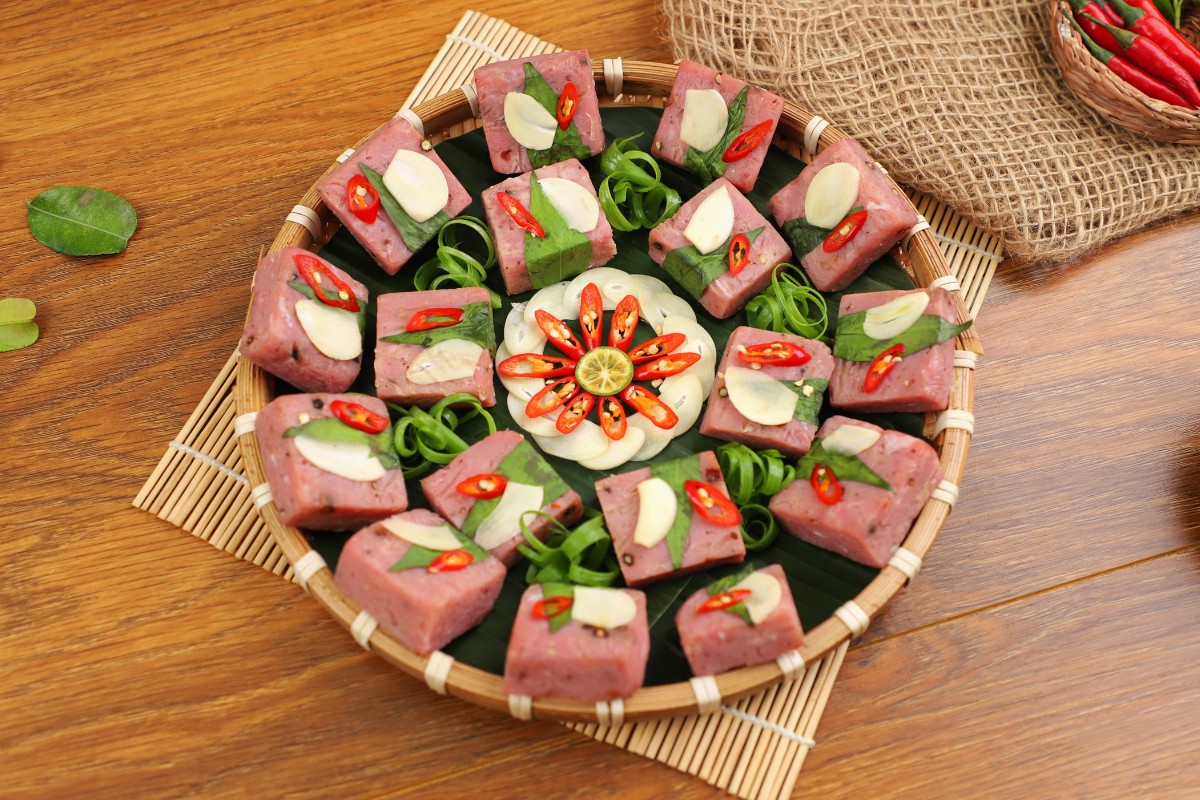
Tom chua – An essential Vietnamese New Year food in the central region
Tom chua, pickled shrimp, is a festive delight in Central Vietnam during Tet. Marinated in spices, fish sauce, sugar, and chili, it offers a sweet, salty, and slightly spicy flavor. Families prepare this treat in advance, allowing the shrimp to absorb the marinade’s flavors. Featured during Tet, it’s served as an appetizer or side dish, its bright and refreshing taste making it a favorite choice for welcoming the Lunar New Year in Central Vietnam.
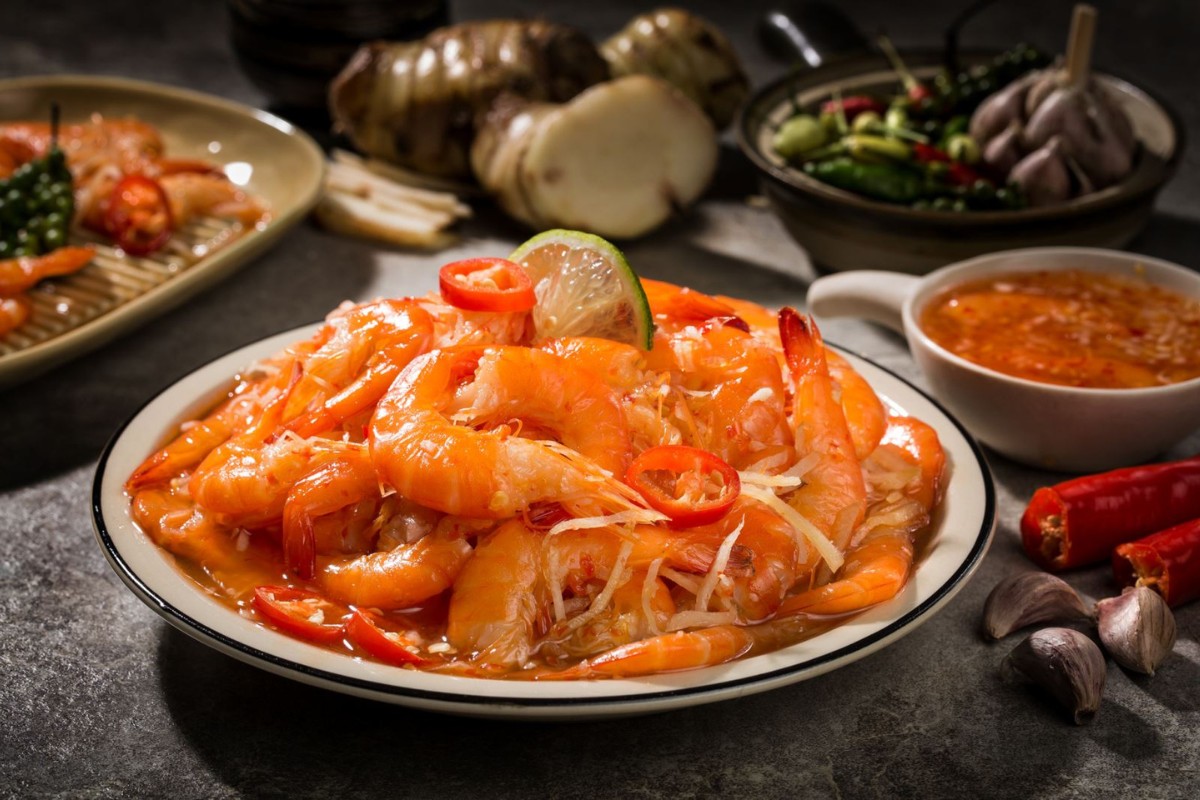
Thit heo ngam mam
Thit heo ngam mam, or pork marinated in fish sauce, is a Vietnamese New Year food specialty in Central. Thin pork slices soak in a blend of fish sauce, sugar, garlic, chili, and spices, absorbing distinct flavors. This dish, enjoyed during Tet feasts, is served with steamed rice and other family dishes, contributing to the festive culinary experience in Central Vietnam.
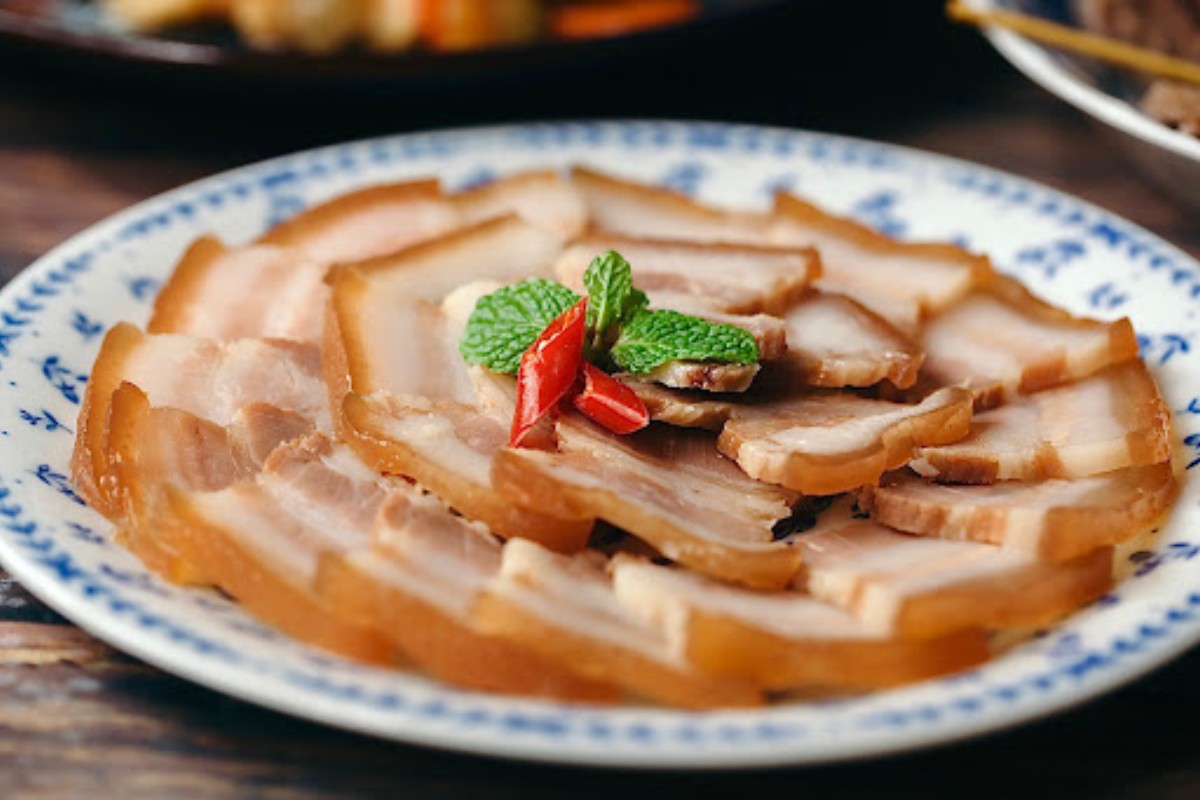
Banh to
Banh to, a Vietnamese cake, is crafted from glutinous rice, cane sugar, and garlic. Enjoy it raw for a sweet, gingery, and sticky rice sensation. Grilling over charcoal releases a distinct aroma, while deep-frying yields a subtly fragrant puffiness. As Lunar New Year approaches, families unite to make banh to, transforming the process into a significant part of their Tet preparations, contributing to the festive culinary traditions and the anticipation of the upcoming celebrations.
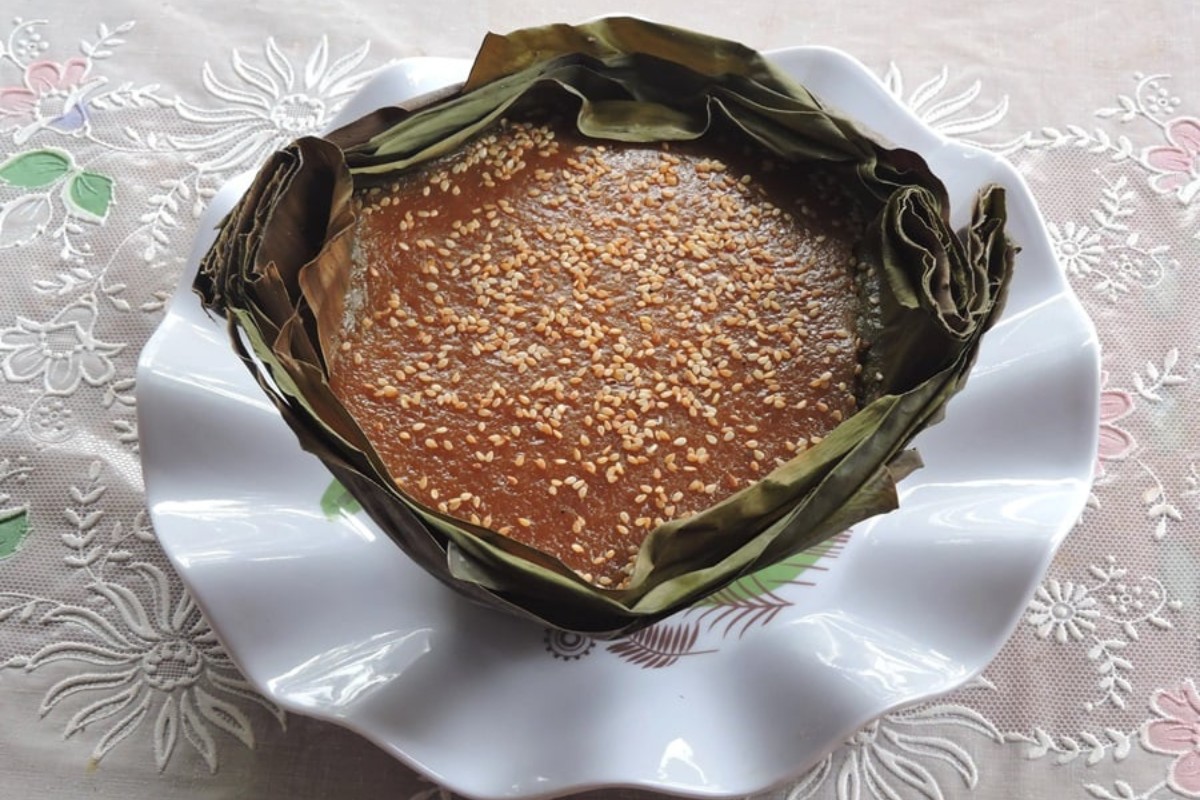
Bo kho mat mia
Bo kho mat mia is a Vietnamese New Year food delight combining sugarcane juice sweetness, bap bo chewiness, and the richness of a simmering stew, resulting in a unique and special flavor. Placed on the Tet dinner table, it symbolizes respect for ancestors and wishes for a prosperous New Year. This tasty and nutritious dish is enjoyed alongside other traditional Tet delights, adding to the festive culinary experience in Central Vietnam during the Lunar New Year celebration.
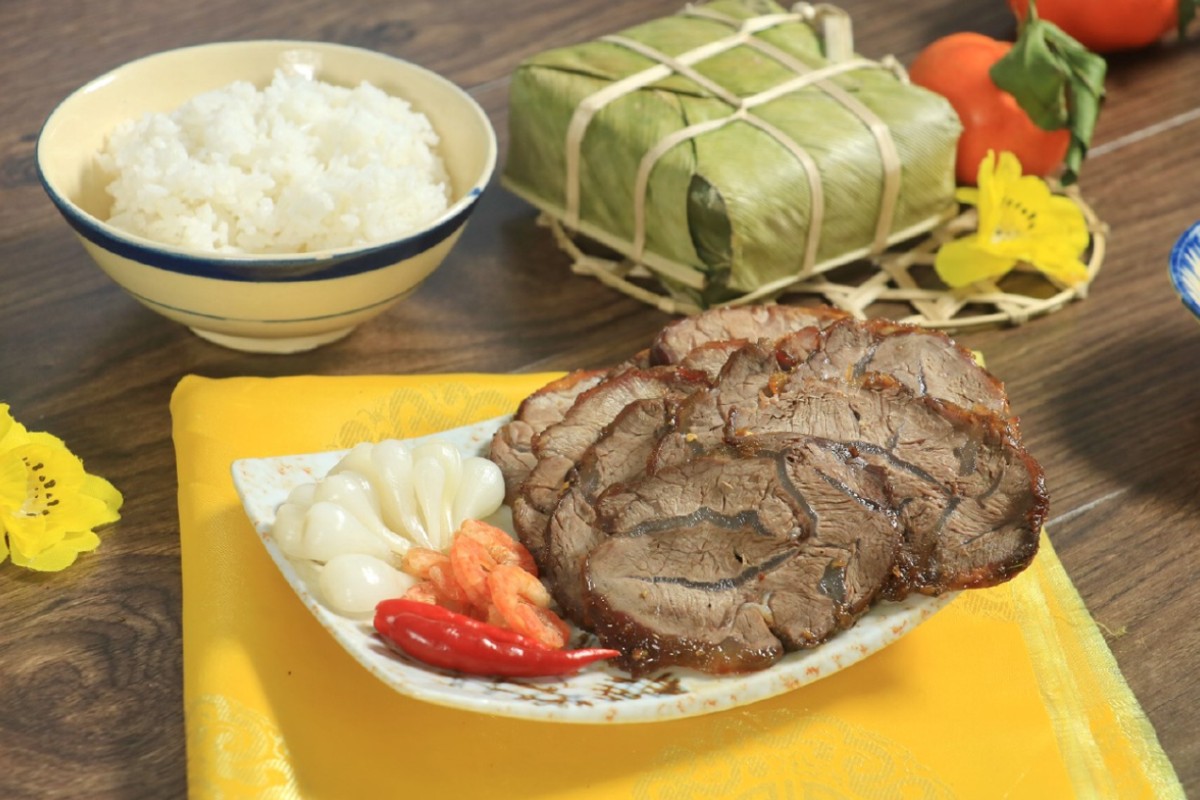
Vietnamese New Year food in the southern region
As Tet approaches in the Southern Vietnam, a plethora of dishes takes center stage, each contributing to the rich tapestry of Southern cuisine.
Cu kieu tom kho
Cu kieu tom kho is a delightful Vietnamese side dish in Lunar New Year. Harmonizing the richness of “tom kho” (dried shrimp) with the crispness of pickled vegetables or “cu kieu,” it offers a delightful blend of flavors and textures. Characterized by vibrant colors, the orange of dried shrimp and the pale, crisp white of pickled vegetables create an appetizing combination. Typically served in small, decorative dishes during Tet, cu kieu tom kho adds both visual appeal and savory pleasure to the festive celebration.
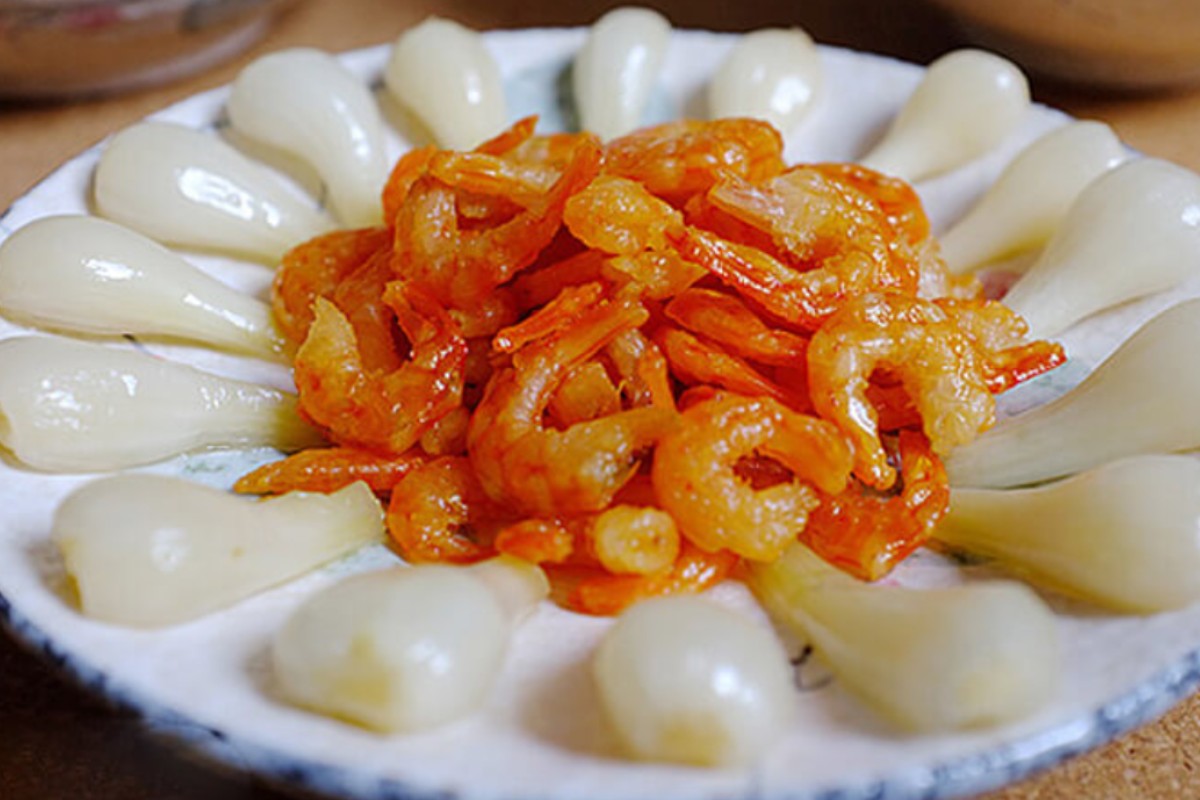
Canh kho qua – A must-have on the typical Southern Vietnamese New Year food menu
Canh kho qua, a Southern Vietnamese New Year food essential, features bitter melon known for its distinctive bitterness and health benefits, rich in vitamins and minerals. Consumed during Tet, it’s believed to cleanse the body and attract good luck. Preparing this soup involves blanching or parboiling sliced bitter melon, then incorporating it into a flavorful broth with ingredients like pork or fish. Seasoned with garlic, shallots, and fish sauce, canh kho qua may not suit everyone’s taste, but it remains a valued Tet tradition for its health benefits and cultural
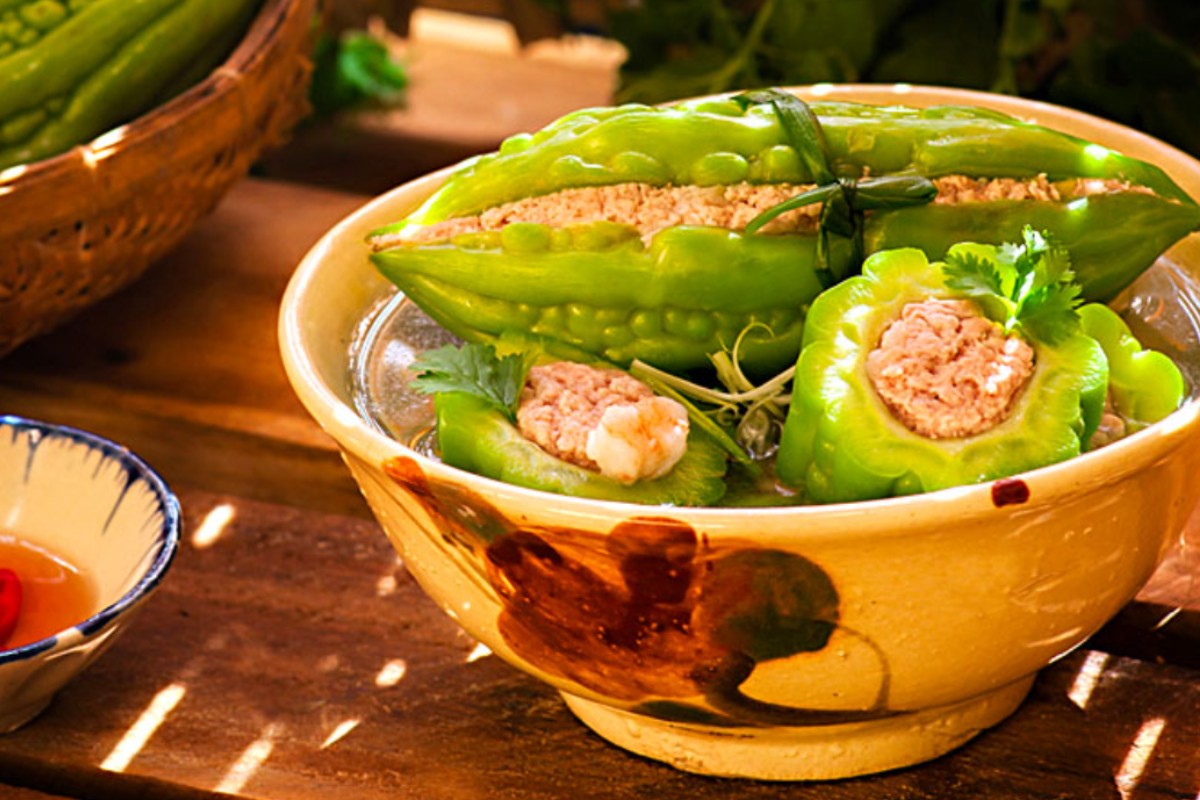
Thit kho tau
Thit kho tau, braised pork belly, is a cherished Vietnamese New Year food in South Vietnam. This flavorful delight features caramelized pork, hard-boiled eggs, and aromatic spices. Pork, simmered with fish sauce, sugar, garlic, shallots, and black pepper, cooks slowly until tender, absorbing the sweet and savory caramelized sauce. Beyond its delicious taste, thit kho tau symbolizes tradition and family, prepared in large quantities during Tet, bringing families together. Served with steamed white rice, its rich flavors and cultural significance make it a cherished Tet tradition, embodying the spirit of a prosperous and harmonious new year.
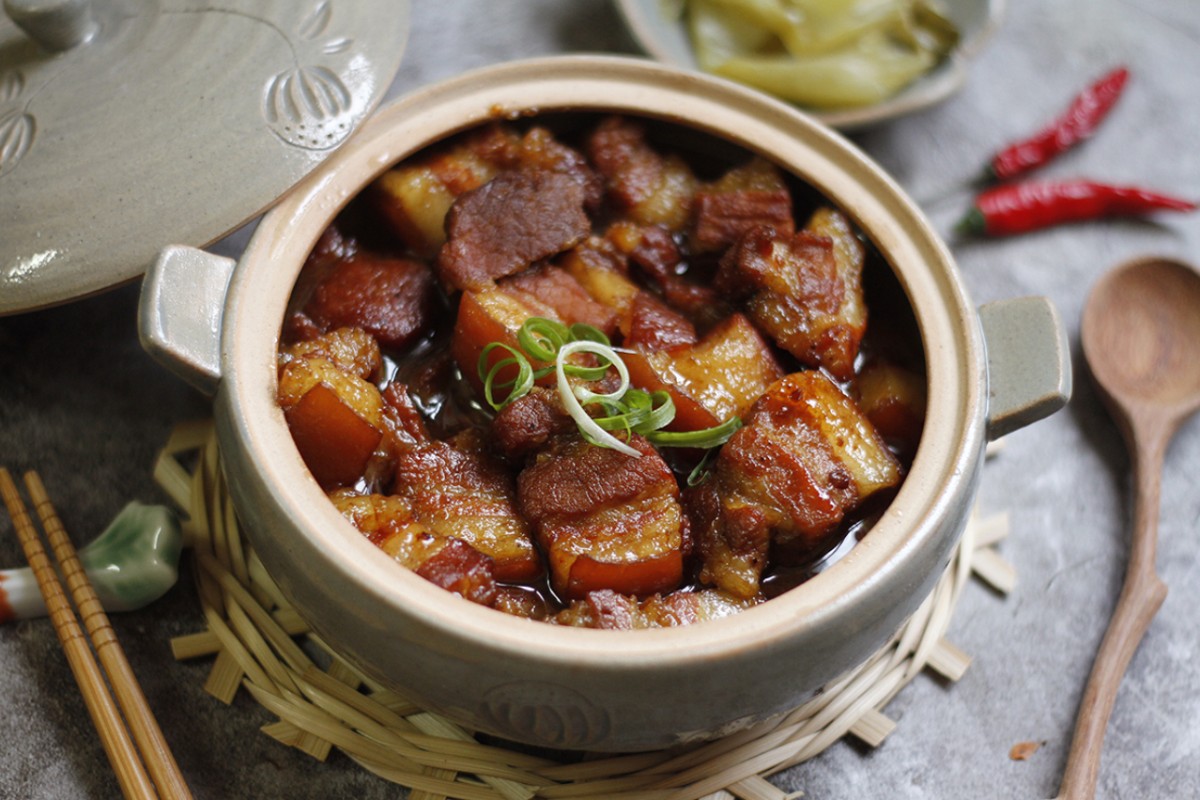
Banh tet
Banh tet is a cherished Vietnamese sticky rice cake that holds a special place in South Vietnam during Tet. Cylindrical in shape, it’s crafted from glutinous rice, mung bean paste, and often a pork filling, all wrapped in banana leaves. With a history spanning generations, its preparation has become a beloved family tradition, bringing family members together in a communal effort that fosters unity and togetherness, reflecting the values of the holiday season. During Tet, families offer banh tet to ancestors on the family altar, a gesture of respect and gratitude for protection and blessings in the upcoming year.
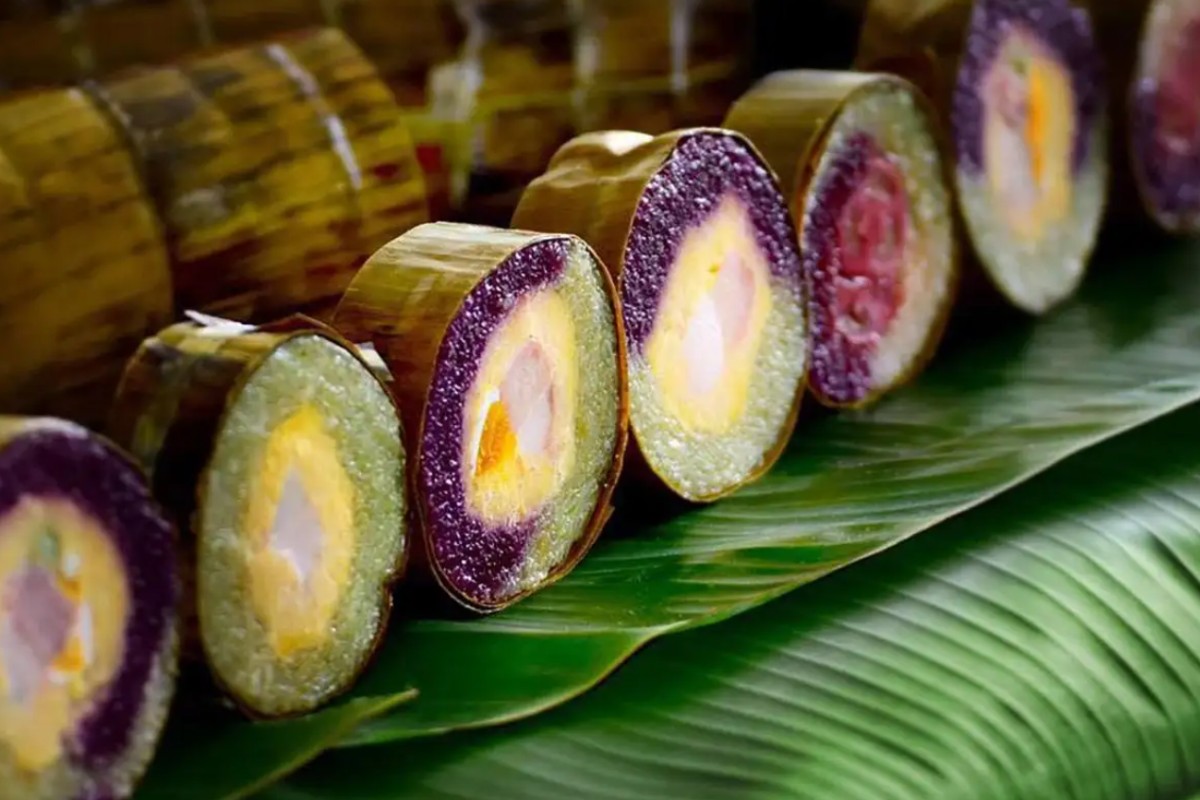
Lap xuong
Lap xuong or Vietnamese sausage is crafted from minced pork, pork fat, and seasonings like garlic, salt, and sugar, with regional variations adding soy sauce or five-spice powder for distinct flavors. During Tet, families in South Vietnam exchange lap xuong as a symbol of prosperity, thanks to the sausages’ reddish color believed to bring wealth in the new year. Often given as gifts, lap xuong is a Tet staple, enjoyed sliced as a snack, added to stir-fries, or included in traditional dishes like xoi, contributing to the harmonious blend of flavors during the Lunar New Year.
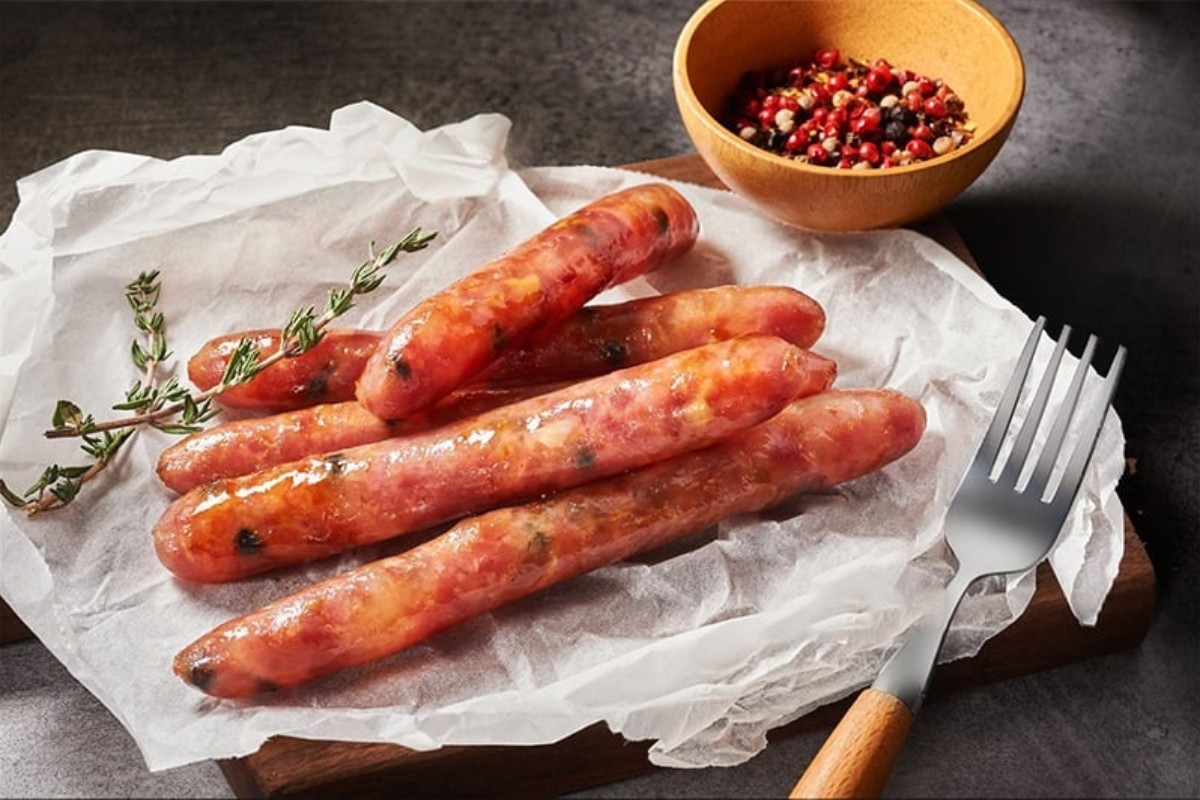
Vietnamese New Year Food is a fusion of cultural legacy and culinary excellence that makes it a cherished element during Tet celebrations. Beyond their flavors, these dishes symbolize prosperity, good fortune, and family unity. As the Lunar New Year approaches, including these Tet foods in your menu promises not just a culinary treat but an opportunity to engage in customs that make Tet a truly special and cherished time for Vietnamese families, adding a meaningful touch to the festivities.
